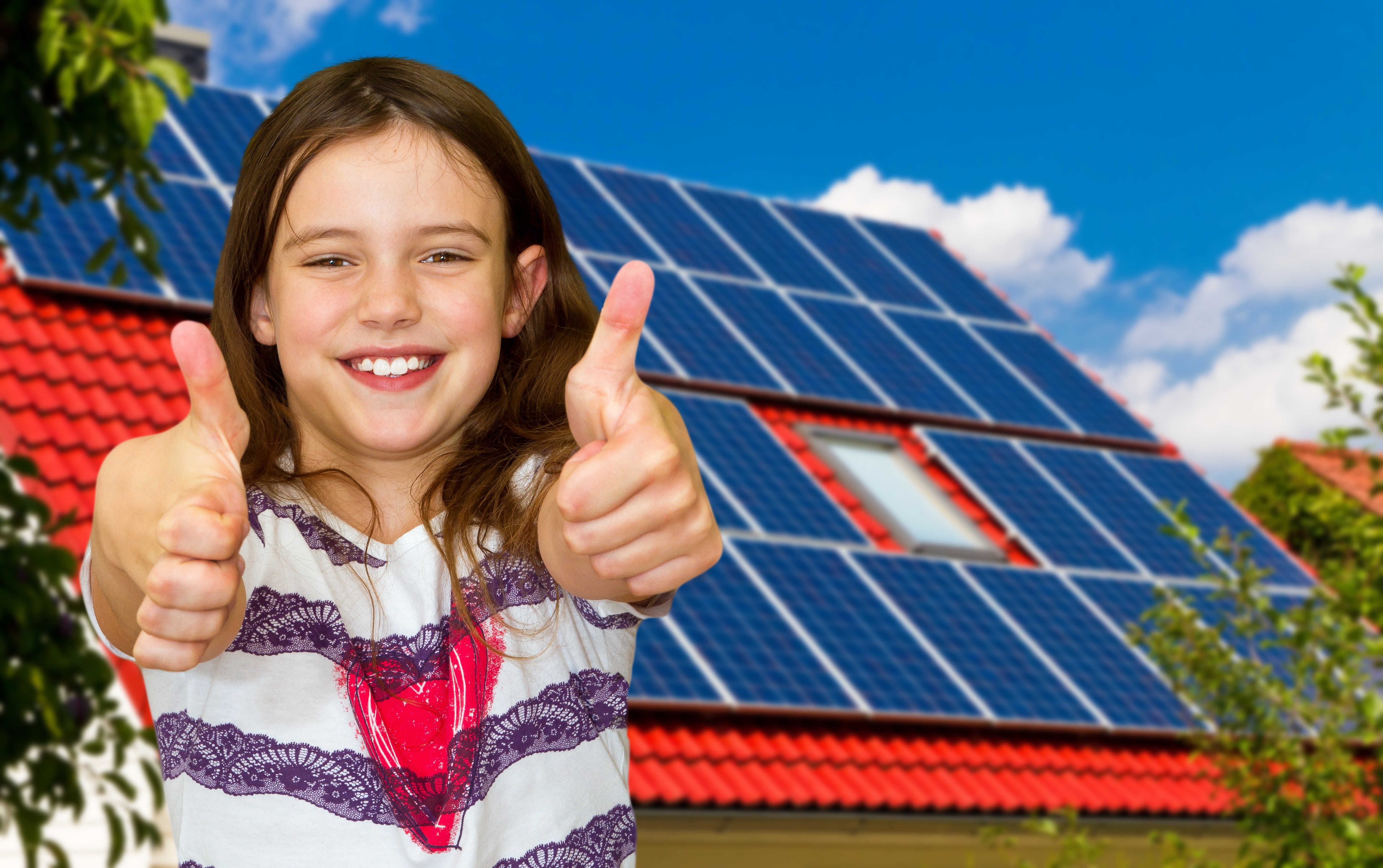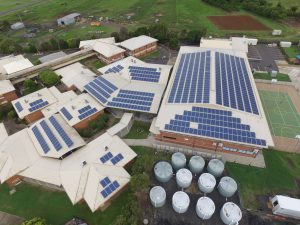
Enormous power bills are the norm for schools, operating multiple rooms simultaneously with lights, climate control, audiovisual equipment, and computer labs.
From 2011 to June 2013 the federal government rolled out the National Solar Schools Program (NSSP). The NSSP boasted an impressive level of achievement. Communications from the Department of Industry, Innovation and Science indicated that over $217 million was provided to 5,310 schools to install renewable energy systems. The solar power systems installed produce enough electricity to power the equivalent of 4600 average households every day.
The funding helped to educate students about renewable energy and energy efficiency, and that everyday actions can prevent the production of millions of tonnes of carbon pollution. While the government grants are no longer available, the uptake in the industry has made solar energy more affordable.
Why should schools ‘go solar’?
The benefits of solar power for our Earth’s future are obvious, however, there are specific reasons why schools are particularly suitable candidates for solar.
- Large school buildings provide the perfect roof-scape for solar panels, which work best on large surfaces, close to mains power and north facing.
- School communities are full of young inquiring minds; minds who will one day run the world. Education at this level is vital for engendering an awareness and sense of responsibility about energy expenditure.
- Schools require electricity during daylight hours, which is when solar power is generated.
- The long summer break in is an advantage, as, ironically, solar power is not at its peak during summer (see next section). While the school is empty, the solar panels feed electricity into the grid and reduce the school’s next electricity bill.
Solar power production
People are becoming more aware of the application, benefits and certain peculiarities of how solar energy works. While sunshine is the core of a solar energy production, the hottest months of the year do not actually produce the most energy.
Solar panels absorb sunlight and convert it into energy, through a chemical reaction. The next step is for the inverter to convert this ‘force’ into the sort of electricity that can power air conditioners, night basketball flood-lights and the hall public address (PA) system.
While a fair assumption might be to expect a double dose of energy on a boiling hot day, excessive heat does not actually result in a productive day for solar panels. This is because the solar panel converts the sunlight and not the heat of the sun into solar power. The panels actually lose efficiency in excessive heat, as the temperature passes outside of its optimal functioning range. With bright and cool winter days perfect for solar energy production, the systems are well-suited to the Australian school calendar.
Numerous factors will be considered when establishing solar systems. Suppliers will survey variable factors that will affect what sort of system will be suit the school. The determining factors will be related to location and weather.
Australia is a wide land with vast disparities in weather systems and patterns, and some locations just get more sunshine.
Other factors will be the size of the roofs on which the school wishes to install the panels, their direction; and other climatic features, such as humidity and wind chill. With much to consider, careful planning is undertaken by teams of energy experts to maximise the productivity of the system, as well as energy savings for the school.
Large systems can be installed with an incorporated solar energy battery. A solar energy system generates solar power, whether the energy is being consumed or not. Storing that excess energy in a battery allows the school to draw on those supplies at high usage times.
Solar energy has travelled light years since Russell Ohl invented the solar cell in 1941, and the first solar battery was used to power a toy Ferris wheel in 1954. Like anything new, early versions can have a prototypical feel about them, and pioneer solar energy users may have felt a bit like they were trialling a ‘beta’ version, but that has shifted. Following decades of steady incremental improvement, solar energy is now reliable, efficient and can be tailored to usage patterns with surprising flexibility.
Schools can now benefit from this background work in research and development, and adopt solar power solutions that deliver financial, as well as educational benefits to their school communities.

Solar systems maintenance
Once the installation is complete, certain maintenance activities will keep solar panels operating at optimum productivity levels. Like any technology, panels and associated battery systems will need a service now and then. Providers will indicate appropriate intervals for this to occur.
Suppliers also recommend that panels are kept clean and free of excess dust and not being shaded by overgrowth. Being mindful of any changes in the environment, such as a dust storm, or excessive wind resulting in fallen branches and leaves, will ensure panels are not underperforming due to reduced access to light.
Finally, monitor the output of the panels. Certain rare faults can occur in solar panels, such as potential induced degradation (PID), or ‘stray currents’; and earth leakage, which is caused by moisture in rooftop circuit breakers. While these faults are rare, they do happen, and they can drastically reduce the energy yield of your system. Through monitoring however, they can be easily identified and rectified by your provider.







